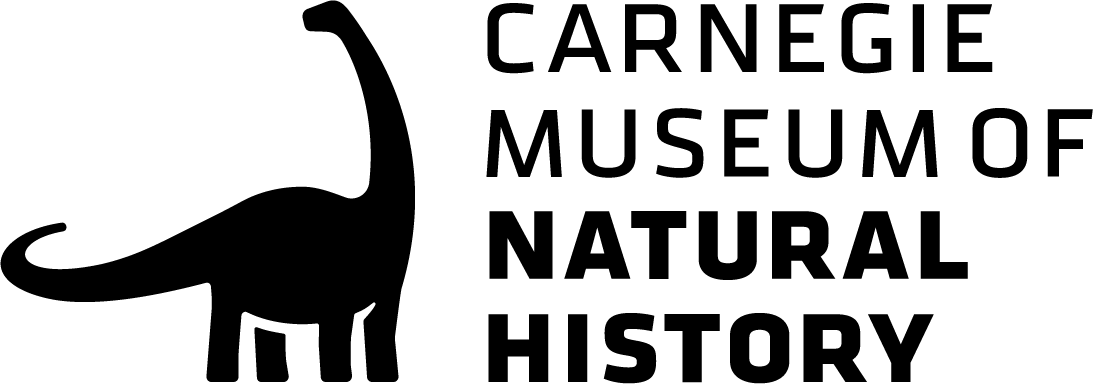January - February 2010

One of the few sunny days during this snowy winter at Powdermill.
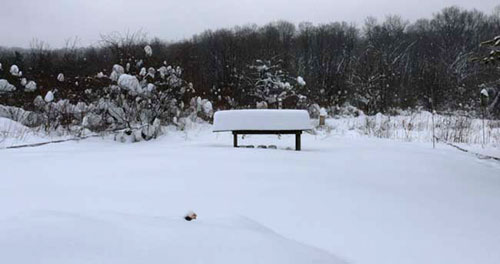
It was a cold, snow-filled winter in southwestern Pennsylvania, and we came very close to breaking the record snowfall that occurred during the winter of 1977-78.
Although we have not yet broken the seasonal record, this February did set a record for the most amount of snow ever recorded in a single month. The photographs were taken following one of the big February storms.
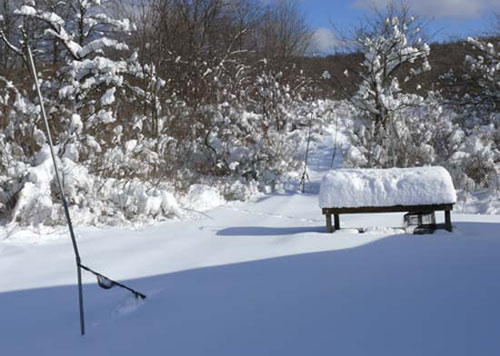
The snow was so deep by the end of the storm that several nets had literally been buried.
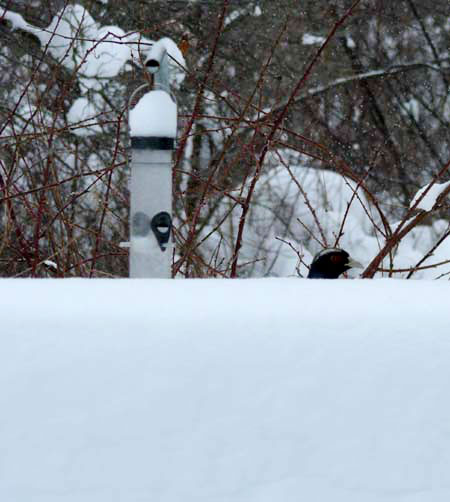
We had 2 pheasants show up in the fall and settle in the banding area at Powdermill. Here, one of these birds can be seen poking its head above the snow at one of the bird feeding stations.
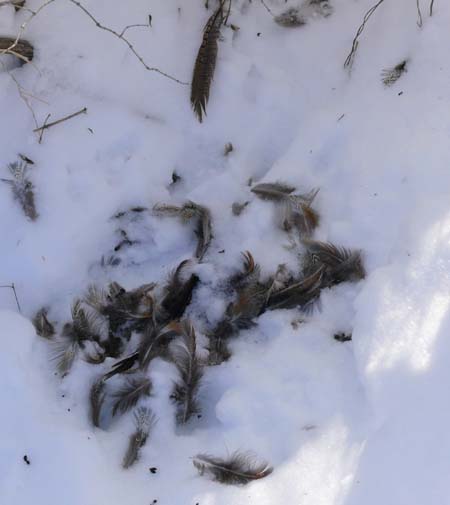
The other pheasant didn't seem to make it through the winter.
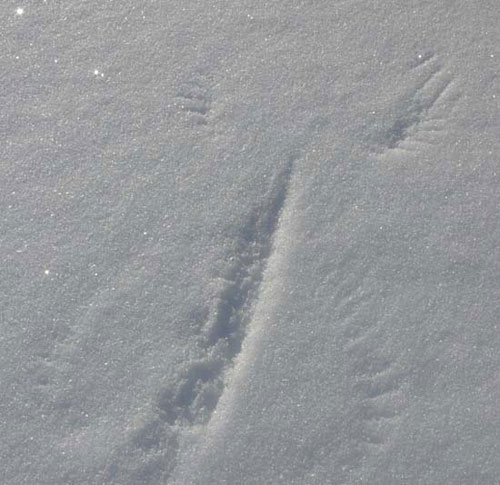
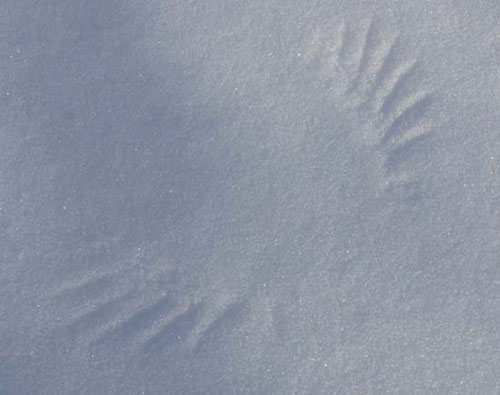
Bird tracks left in the snow.
Snow angel.
The lack of an irruption of any of the northern finches made it a rather uneventful period for bird banding at Powdermill. A few of the individuals captured this winter are discussed below.
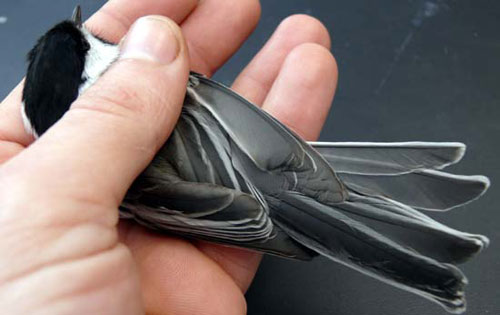
Black-capped Chickadees are often difficult to age after the cutoff date for skull ossification. Although this characteristics should not be used alone, the outer tail feather of the adult typically has white edging that wraps around the tip and along the edge of the inner web of the feather, and this is generally not the case in HY/SY birds.
Young birds frequently have a molt limit where the outer couple greater coverts are retained juvenile but this is very difficult to detect, and a molt limit is especially hard to see in this species due to the psuedo limit within the greater coverts.
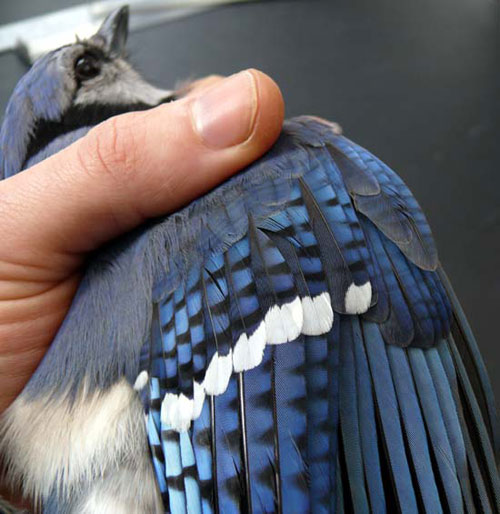
Blue Jays can be aged using a number of criteria including the existence of molt limits, eye color, the color of the roof of the mouth, and barring on the primary coverts and alula feathers. The obvious black barring on the primary coverts and alula feathers in the picture below clearly identifies this individual as an ASY individual.
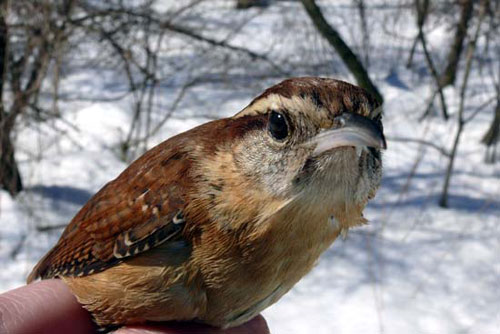
Carolina Wren doing well despite the winter conditions.
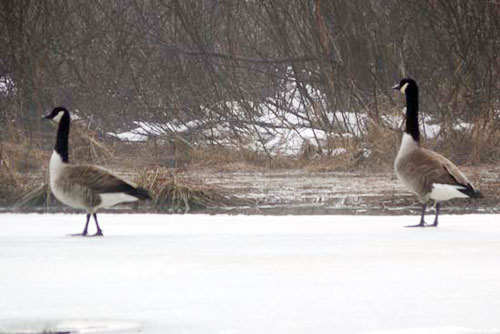
Canada Geese on ice at Powdermill.
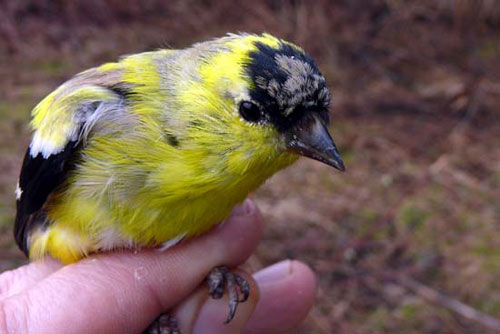
American Goldfinch (male) molting into the breeding plumage.
Assistance at the banding lab over the winter was provided by Mary Shidel, Marcia Arland, Julie Zeyzus, Marja Bakermans, and Jeff Territo.
